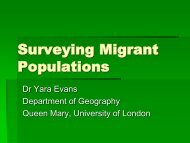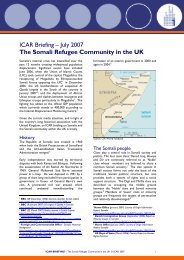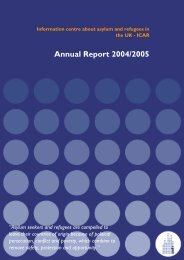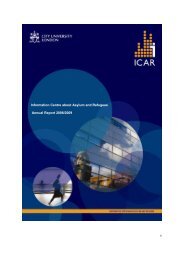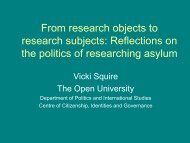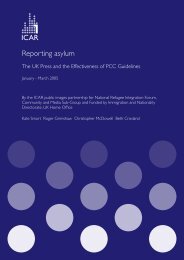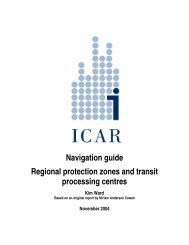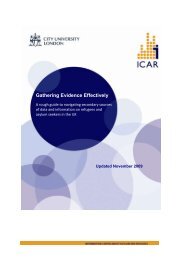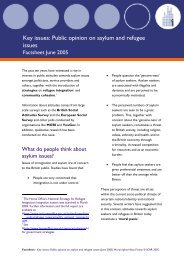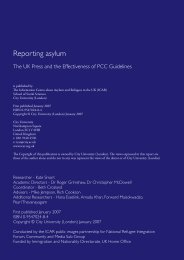Uncovered: assessing media and communications needs ... - ICAR
Uncovered: assessing media and communications needs ... - ICAR
Uncovered: assessing media and communications needs ... - ICAR
- No tags were found...
You also want an ePaper? Increase the reach of your titles
YUMPU automatically turns print PDFs into web optimized ePapers that Google loves.
There was a fear amongst faith groups of being misrepresented <strong>and</strong> ignorance of the ‘rules ofengagement’ when working with the <strong>media</strong>. One representative said he felt safe within his own faithcommunity <strong>and</strong> nervous about the implications of raising the issue of its relationship with the widersociety.Muslim interviewees agreed that they had once shared that view but events on September 11th2001 had changed everything <strong>and</strong> they now recognised the value of engaging with the <strong>media</strong>. Onespokesperson for an Islamic organisation professed himself a regular contributor to local press <strong>and</strong>broadcast outlets <strong>and</strong> suggested other faiths might have much to learn from his own.Representatives from isolated rural groups recognised the potential benefi ts of <strong>media</strong> engagement,<strong>and</strong> some had produced their own news releases. They complained however that the paperswere not paying them attention <strong>and</strong> expressed frustration at not being able to get recognition fromjournalists.Fig 4.3.6 Media exposureMost organisations surveyed have been mentioned in the <strong>media</strong>. Those who know how to contact<strong>and</strong> have had contact with the <strong>media</strong> are more likely to have been mentioned in it. Refugees <strong>and</strong>migrants are least likely <strong>and</strong> rural groups the most likely to have received <strong>media</strong> coverage.3.7 Satisfaction with current <strong>media</strong> coverageMost organisations are dissatisfi ed with the <strong>media</strong> coverage they receive. This is felt especiallyamongst refugee <strong>and</strong> migrant worker <strong>and</strong> faith organisations <strong>and</strong> may relate to the perceived bias ofthe <strong>media</strong> against these groups.There are broader issues here such as anti-refugee/migrant sentiment that might not be addressedsimply through training or strategy <strong>and</strong> these wider issues are considered elsewhere in this report.However this also reinforces the importance of creating a public relations strategy.<strong>Uncovered</strong>: <strong>assessing</strong> <strong>media</strong> <strong>and</strong> <strong>communications</strong> <strong>needs</strong> <strong>and</strong> capacity of marginalised communities21






